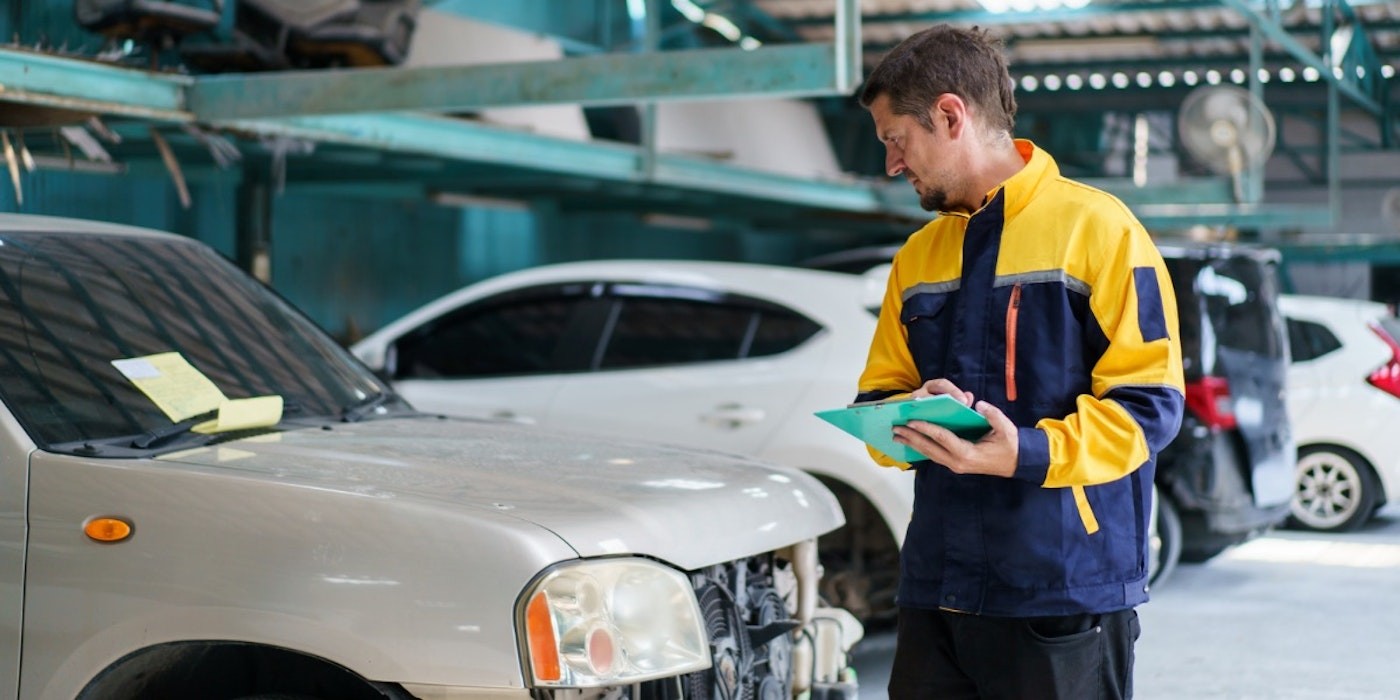How to Secure Car Repair Loans and Get Your Car Back on Track

The average Australian driver spends more than $1,500 yearly on keeping their car running, says the Australian Automobile Association. When a surprise repair bill hits, it can be tough to cover. But, car repair loans are there to help. These loans let you pay for repairs quickly and hit the road again. They cover everything from accidents to unexpected breakdowns, acting as a financial safety net for hard times.
Figuring out how to finance car repairs can feel overwhelming, especially with unexpected expenses. This guide helps you understand your options for a car repair loan. It shows you how to cover the costs of fixing your car and getting it moving again. Whether this is all new to you or you want a better way to handle these costs, help is available. You won't be left stranded.
Key Takeaways
- Car repair loans can be essential in managing the costs of unexpected car repairs, enabling you to focus on getting back on the road.
- With various finance options available, finding a suitable solution to fund your car repairs is more manageable than ever.
- From accidents to mechanical breakdowns, car repair loans provide essential support regardless of the cause.
- Understanding your finance options for repair loans can significantly smooth out the process of dealing with sudden repair expenses.
- Being knowledgeable about these lending options can save you from additional financial distress and expedite your vehicle's return to serviceability.

The Basics of Car Repair Loans in Australia

When your car breaks down, fixing it can be super stressful. In Australia, you can get a car repair loan to ease this pressure. These loans help you cover costs from accidents or just regular use. Knowing your loan options is key.
- Types of Loans: You can pick between secured and unsecured loans. Secured loans need something valuable, usually a car, and have lower rates. In contrast, unsecured loans have higher rates but don't need your car as a guarantee.
- Lender Variability: The rates and terms differ between lenders. It's smart to look for the best deal. Make sure what you choose fits your budget.
- Impact on Personal Finance: Think about how the loan will affect your budget. It’s crucial to make sure the repayments won’t strain your finances.
- Additional Costs: If your car needs fixing because of an accident, check how car insurance can help with the loan. Some loans include these repair costs in their plan, which might increase the loan size.
Choosing the right car repair loan is about looking at every option closely. Make sure the loan won’t hurt your budget. Being well-informed helps you keep your car running without too much stress.
How to Finance Car Repairs

Unexpected car repairs can be a big problem, especially if your main car is out of action. It's key to look at all your finance choices carefully. This includes car loans, personal loans, payday loans, or using a credit card. Let's explore the best ways to handle these options without stress.
- Car Loan: Look into a loan made just for car costs. These loans often come with terms that suit repair expenses and buying parts.
- Personal Loan: A personal loan is versatile and may offer a good rate. It doesn't have to be just for cars, letting you fix up or get a new ride.
- Payday Loan: Consider a payday loan for fast fixes, but watch out for the high cost. It's a quick fix until you get paid next.
- Credit Card: Using a credit card you already have could help. You might earn rewards or get a grace period on interest.
When checking out loans or other ways to foot the bill, focus on the comparison rate. This rate shows the full cost, including interest and any extra fees. Choose a way to pay that fits well with your budget and avoids more debt.
Assessing Your Financial Situation for a Car Loan

Thinking about a car repair loan? First up, check your financial health. This makes sure you won't struggle to pay it back.
Evaluating Your Credit Score and History
Know your credit score before you borrow. It's key when lenders decide if they'll lend to you. If your score is high, you might get better loan terms and lower interest rates.
Understanding Loan Affordability and Repayment Terms
Before getting a loan for car repairs, see what you can pay back each month. Make sure it won't hurt your budget. Look into the lender's repayment terms to lessen financial pressure.
Considering the Overall Cost: Interest Rates and Fees
When looking at a loan's cost, don't just focus on the interest rate. You also need to consider extra fees. This helps you budget correctly and avoids surprises later.
Comparing Different Types of Car Repair Financing Options

When your car needs repairs, it's key to know your financial options. The right loan saves you money and keeps life stress-free. It must not cause extra money problems.
Personal Loans vs. Payday Loans vs. Credit Card Advances
- Personal Loan: It comes with low rates and a long time to pay back. Good for planning your budget.
- Payday Loan: Fast money but with high rates. Best for fixes you can't wait for.
- Credit Card: Easy for small fixes you can pay off soon, but watch out for high interests.
Secured vs. Unsecured Loans: Pros and Cons
- Secured Loan: Has lower rates because it needs something valuable from you. But you risk losing this if you can't pay.
- Unsecured Loan: No need to risk your stuff, but the rates are often higher. Lenders worry more this way.
Comparing Lenders: What to Look Out for
Checking each lender's deal is very important. Look at interest rates, ways to pay back, and any extra charges. A good deal fits what you can afford and doesn't stress you out. Lower rates are good, but so are payment plans that can change if needed.
Steps to Apply for a Car Repair Loan

Getting a car repair loan may sound hard, but knowing how it works can help a lot. I'll guide you on applying and getting that approval smoothly.
- Check Your Credit Score: Begin by seeing your credit report from the top credit bureaus. Your score matters for the loan approval and the interest rate you'll get. A good score could mean lower rates.
- Assess Your Financial Situation: Collect all your financial papers to show the lender. This usually includes your recent payslips, tax returns, and your debts. It shows if you can pay back the loan.
- Choose the Right Lender: Do some homework to pick the best lender for you. Find one that shows clear and fair loan costs, with no hidden fees. Make sure you understand what the loan will cost you.
- Understand the Product Disclosure Statement: Don't skip reading the lender's product disclosure statement. It tells you everything you need to know about the loan, including your rights and what you'll owe.
- Submit Your Application: With all your documents ready and your lender picked, now fill out the application. Make sure every detail you provide is correct to avoid delays.
- Wait for Approval: After sending the application, the last step is waiting for the lender's decision. If you've met all their requirements, you should get a yes soon. Then you can fix your car with the loan.
These steps make applying for a car repair loan easier. They help you deal with the money stress from sudden car fixes.
Alternative Financing Solutions for Car Repairs

Unexpected car repairs don't always fit well with traditional financing, especially when avoiding high interest is key. Luckily, options like no-interest loans (NILs) can help. These loans are designed for people with lower incomes or those on Centrelink. They don't charge any interest or fees.
If you have an emergency fund, using it for car repairs could help manage costs. But if your savings fall short, working out a payment plan with the repair shop is another way. This can spread the cost over time, easing the immediate burden.
- Community groups often help with car repair costs out of the blue. They offer interest-free aid, making sure you can get back on the road.
- No Interest Loans (NILs) are great for urgent, essential car repairs. They let you focus on daily life without the stress of sudden expenses.
Looking into these choices can make car repair finances easier to handle. They help you get back to your usual without too much of a pause.
Conclusion
Car repairs can throw you off your game financially. So, setting up a good money plan can help a lot. It's important to understand how to manage your money. This knowledge can help you pick the best loan options.
It's smart to have savings for emergencies. But if you don't, looking for the right loan matters a lot. This way, paying for repairs won't hurt your wallet too much. Think carefully about your financial situation when choosing a loan.
Keeping a car in shape is a big job. With smart money moves, you can handle repair costs without stress. Learn about your options, pay back your loan on time, and be wise with your money. This way, you can steer through any financial challenges with ease.
How Driva Can Help You Finance Your Next Vehicle Purchase
Looking for a way to finance your next vehicle purchase? Driva may be able to help you out, especially if you have bad credit. You can get approved for a loan or credit to cover the cost of the car, as well as any car maintenance and repair costs. This can help you get the best car for your needs without hurting your credit score. Driva compares 30+ lenders so you can get the best rate, and their personalised rates make your repayments more manageable. It's worth considering Driva to ensure you're getting the best deal possible.
Frequently Asked Questions
How can I pay for car repairs if I don’t have enough savings?
If you don't have enough savings to cover your car repair bill, you can consider taking out a car repair loan to help pay for the repairs. This way, you can get your car back on the road without having to worry about the immediate cost.
What are the loan options available for car repair loans?
When looking for a car repair loan, you can compare car loan options from different lenders. You can shop around to find a loan with terms that best suit your needs and financial situation, even if you have bad credit.
How do I know how much money I need to borrow for car repairs?
To determine how much you need to borrow to cover the cost of repairing your car, you should get a clear estimate of the car repair bill from the service provider. This will give you an idea of how much you need to repay through the loan.
What are the key factors to consider when comparing car repair loan options?
When comparing car repair loan options, you should look at the interest charges, fees associated with the loan, the repayment terms, and whether the loan offers fixed or variable interest rates. These factors will help you choose the most suitable loan for your situation.
Can I apply for a car repair loan if I receive Centrelink payments as my primary source of income?
Some lenders may consider applicants who receive Centrelink payments as their primary source of income for car repair loans. However, eligibility criteria may vary among lenders, so it's important to check with the product provider directly to see if you are eligible.
What happens if I don’t pay off the car repair loan on time?
If you fail to make payments on time for your car repair loan, the lender may charge you additional fees and interest. In severe cases, the lender may repossess your vehicle to recover the outstanding debt.
Is it possible to spread out my loan payments over time for a car repair loan?
Yes, some lenders may allow you to spread your payments out over time for a car repair loan. This can help make the loan more manageable and ease the financial burden of repaying the loan all at once.


.png)







